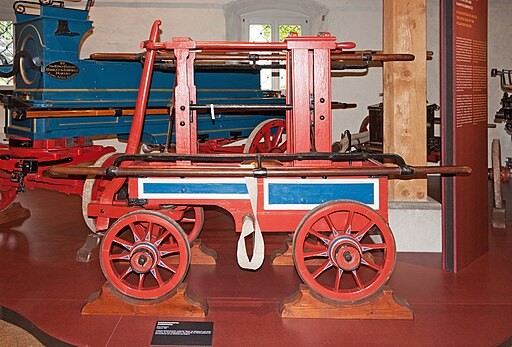In our modern times, water pressure technology is ubiquitous, and any individual who waters a garden, takes a shower, or extinguishes fires benefits from the technology devised to harness it. During the 17th and 18th centuries, developing a steady stream of water not punctuated by pressure drops was a breakthrough.

Development of Fire Fighting Technology
The earliest fire fighting devices date back to 2 B.C. and marked the advent of the first fire pump by Ctesibius of Alexandria. In the 16th century, the turmoil-stricken Europe needed a new firefighting technology, and the reinvention of fire pumps ushered in a new era. For instance, the catastrophic Great Fire of London in 1666 demanded more efficient firefighting strategies.
Early engines were used to direct a water stream at an out-of-control fire like their modern counterparts. This disaster was a significant problem when buildings and their contents were flammable. Colonial Williamsburg designed a fire engine that remained safe until 174,7 when the Capitol Building burned.
Because of this, local authorities decided to invest in a proper fire engine. The local authorities were directed to buy one 'large' pump and one 'small' at a total cost of 40 pounds. A patented engine made in London by renowned English inventor Richard Newsham around 1750 was the choice for anyone serious about combating fire in England or America.
The Mayor gave the Newsham fire engine to the City of Rochester for public use, and it was purchased by the Corporation of St. Albans in 1733. It was later used in the house of Alderman Francis Nichol and was in service in a Kent brewery by 1832, where it tackled a fire in Hatfield House that year. After several decades, it was presented to the Fire Brigade in 1903, where it was kept at St. Albans Fire Station.
READ ALSO: How Does Water Put Out Fire? Exploring the Chemical Reaction in Extinguishing Flames
How Does Newham's Fire Engine Work?
The famous man-powered engine was believed to be the oldest surviving fire engine in the country. It can throw 160 gallons (606 liters) of water per minute up to 165 feet (50 meters) high. It weighed 354.5 kilograms (781.5 pounds) and had a dimension of 7 in x 5.4 in x 8 in (17.70 cm x 13.70 cm x 20.30 cm).
Newsham patented his new water engine for the quenching and extinguishing of fires. He designed further firefighting equipment before he died in 1743. This invention is far from his pearl button manufacturing business in London.
One of the most remarkable features of the Newham's fire engine is its innovative 'windkessel', a German concept which means 'wind chamber'. This term is predominantly used in physiology to explain blood transmission between the heart and the aorta.
This terminology dates back to German physiologist Otto Frank, who introduced it in 1899.
Newsham applied fluid dynamics principles in the human circulatory system to design this life-saving technology.
Newham's fire engine displayed remarkable physics behind the enduring technology of a steady stream of water under pressure. It contributed to firefighting technology by showcasing an impressive pump mechanism.
RELATED ARTICLE: How To Survive a Fire: 5 Tips To Stay Out From Your Burning House
Check out more news and information on Fire in Science Times.














